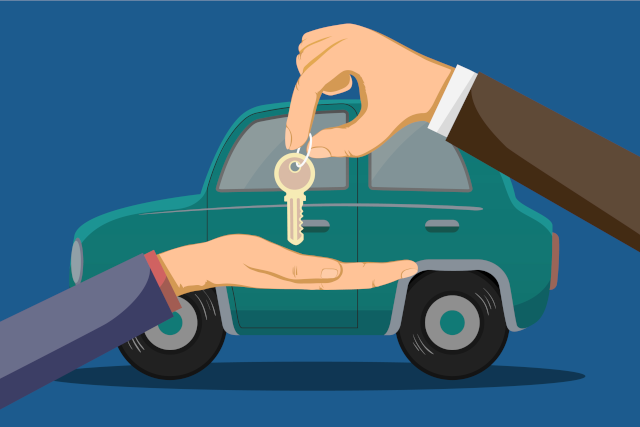Understanding Legal Fees: What Percentage Do Most Injury Lawyers Take?
The world of personal injury law is extremely complex, and one of the most common questions we receive as personal injury attorneys is “What percentage do most injury lawyers take? It varies, but 33% seems to be around the standard amount awarded to your attorney. Let’s take a closer look at some of the fees attorneys charge for their services and the factors that play a crucial role in determining these fees.
The Contingency Fee System
Most personal injury attorneys work on a contingency fee basis, meaning that they are not awarded compensation unless they settle for their client. Let’s take a look at some of the specifics of what a contingency fee is and how they are determined.
What is a Contingency Fee?
Before we answer the question, “what percentage do most injury lawyers take?”, it is important to know what exactly a contingency fee is, and how it works. In personal injury cases, lawyers typically work on a contingency fee basis, meaning that the lawyer’s fee is contingent upon whether or not they win the case. If the client does not receive a settlement in their favor, the lawyer does not get paid. This is a system designed to ensure that everyone, regardless of their financial ability, can afford an attorney without any upfront fees.
Standard Contingency Fee Percentages
In most cases, the common contingency fee percentage in personal injury cases is around 33.33% or one-third of the settlement. Depending on the complexity of the case, this rate can vary. Variables include the stage at which the case is resolved and in which jurisdiction. Let’s check this out in more detail below:
- Pre-Trial Settlement: If a case settles before going to trial, the standard fee is typically 33.33%. This is because the lawyer’s risk and investment of time and resources are relatively lower.
- Post-Trial Settlement or Judgment: If the case goes to trial and results in a judgment or settles during trial, the contingency fee often increases to 40%. The rationale is that trials require significantly more time, effort, and resources.
- Appeals: If the case goes to an appeal, the lawyer’s fee can sometimes increase further, reflecting the additional work required.
Variations by Jurisdiction
Depending on the jurisdiction and the rules and regulations about contingency fees, the contingency fee might vary; for example, in most U.S. states, the typical contingency fee is around 33.33% to 40%. However, some states impose caps on these fees, particularly in medical malpractice cases.
Sliding Scale Agreements
Sliding scale agreements are another fee structure used by personal injury lawyers, which means that the percentage taken as a fee varies depending on which stage the case was settled or resolved. Let’s take this for example:
- Early Settlement: 25%
- After Filing a Lawsuit: 33.33%
- After Trial Begins: 40%
This approach can align the lawyer’s incentive with the client’s interest in achieving the best possible outcome as quick as possible.
Factors Influencing Contingency Fees
There are quite a few factors influencing contingency fees such as case complexity and risk, potential recovery amount, and legal expenses and costs. Let’s take a closer look at this in more detail below.
Case Complexity and Risk
The complexity and risk associated with a case can significantly impact the contingency fee percentage. More complex cases might require extensive investigation, expert witnesses, and more, which could mean a longer time frame and higher fees as a result.
Potential Recovery Amount
In cases where large recovery amounts could be awarded, lawyers might often negotiate a lower fee. Furthermore, in cases with recoveries that might be smaller, the attorney could require a higher percentage to justify the economic risk.
Legal Expenses and Costs
The cost of handling the case, known as legal expenses, can affect the amount the client will be awarded. Some of these costs include:
- Filing fees
- Expert witness fees
- Deposition costs
- Medical record retrieval fees
- Travel expenses
In most cases, these costs are deducted from the settlement or judgment before calculating the lawyer’s contingency fee. It is important for the client to understand how these costs will be handled and to review the agreement carefully before proceeding.
Ethical Considerations and Fee Agreements
There are a few ethical guidelines that must be taken into account as well. Let’s check these out in more detail below so you can learn more.
Ethical Guidelines
Ethical guidelines are critical in law; therefore, lawyers must follow ethical guidelines set by the bar association and any governing bodies. These guidelines are crucial to make sure that the fees are reasonable and that the client is fully informed about how fees are calculated and deducted.
Written Fee Agreements
A written fee agreement is critical in personal injury cases, and should clearly outline things such as:
- The contingency fee percentage
- How costs and expenses will be handled
- The client’s responsibilities
- Conditions for termination of the agreement
The client must carefully review and understand the agreement prior to signing. The client must address any questions that they might have to seek clarification on anything that is unclear.
Pros and Cons of Contingency Fees
Although contingency fees are popular among personal injury clients, there are also some cons of this type of fee structure. The cons are mainly focused on the attorney and the fee they receive. Let’s check out some of the advantages and disadvantages of contingency fees in more detail below.
Advantages
- Accessibility: Contingency fees make legal representation accessible to individuals who might not afford to pay hourly or retainer fees.
- Motivation: Lawyers are motivated to win or settle the case favorably, as their payment depends on it.
- No Upfront Costs: Clients do not need to pay anything upfront, reducing financial stress.
Disadvantages
- High Cost: In cases with large settlements, the contingency fee can amount to a significant sum.
- Variable Costs: Legal expenses can reduce the net amount received by the client.
- Potential Conflicts: There could be a conflict of interest if a lawyer advises settling quickly to secure a fee rather than pursuing a potentially higher recovery through trial.
Alternative Fee Structures
When answering the question, “What percentage do most injury lawyers take?” it is important to note that there are a few alternative fee structures that attorneys use; however, they are not as common in personal injury cases.
Hourly Fees
Depending on the attorney, some bills are billed by the hour for the time that they spent on the case. This can be beneficial for cases that are less complex; however, when the case gets more complicated, this fee structure can get expensive.
Flat Fees
Some attorneys choose to use a flat fee to charge for their services. This is more common in cases that are less complex, however, might prove more costly for the client in the long run.
Hybrid Arrangements
Some lawyers might also offer a hybrid arrangement or a combination of both fee structures. An example of this might be a lower hourly rate combined with a contingency fee if the case settles in their favor.
How to Choose the Right Lawyer and Fee Agreement
It’s crucial to choose the right lawyer and fee agreement that works best for you. Here are a few things to keep in mind.
Research and Referrals
It’s important for clients to research potential lawyers and look for referrals from trusted sources, such as reviews, testimonials, and professional ratings which can provide insights into the lawyer’s reputation.
Initial Consultation
The initial consultation is an opportunity for the client to get a good idea of if the attorney is a good fit for them, discuss their case, understand potential outcomes, and to evaluate the attorney’s fee structure.
Understanding the Agreement
It’s crucial that the client fully understands the fee agreement, including how fees and costs are calculated and deducted. It’s important that they feel comfortable asking the attorney to explain anything they are not sure about.
Negotiating Fees
Depending on the attorney, you might be able to negotiate the contingency fee percentage, especially if the potential recovery is substantial. Attorneys might be willing to adjust their fees based on the specifics of the case.
Get in Touch With Mutrux Firm Today for a Free Consultation!
Now that you know the answer to the question, “What percentage do most injury lawyers take? We know it’s around 33.33%, so you can have a better idea of what to expect when you are awarded your damages. If you have been injured due to the negligence of another, and need reputable attorneys who take pride in providing the best possible legal services to their clients, Mutrux Firm is here to help!
Our trusted injury lawyers have a track record of success, and make it their mission to provide only the best possible legal counsel to their clients. We work on a contingency fee basis, so we only get paid if you win! Give us a call at (888) 550-4026 or contact us here for more information! We look forward to working with you!
- Can You Claim a Car Accident Without a Police Report in Mo.? - July 12, 2024
- Who Pays for a Rental Car After an Accident? - July 8, 2024
- How Much Compensation Can I Receive for a Hit & Run Accident? - June 28, 2024


